MARTIN Acoustic Guitars GUIDE: Parlor, 0, 00, 000, OM, and Dreadnought. History, Features and Martin Guitars Made in Mexico.
Martin Guitars History
CF Martin & Company, also known as simply Martin, was founded in 1833 by Christian Frederick Martin, a 37-year-old German immigrant from a family of cabinetmakers, an expert in guitar manufacturing.
Christian Frederick settled permanently in 1838 in the small town of Nazareth in the state of Pennsylvania, exactly in the same place where the current Martin factory continues to operate.
The company would be passed successively over time from father to son, until Frank Henry Martin took control of the brand from 1888 to 1945. This period played a fundamental role in the development of the company, especially during the 1920s and 1930s.
Frank’s sons co-managed the company from 1945 to 1986, arguably the brand’s heyday. But let’s start with the company’s origins, to understand why Martin is today arguably the most influential and charismatic acoustic guitar brand in history.
Martin Guitars Features
While Antonio de Torres laid the foundations of the Spanish guitar, C. F. Martin would establish the foundations of the acoustic guitar. Today, most acoustic guitars are made according to the canons established by the founder of the Martin company.
Like the classic X-Bracing system, which provided greater solidity to the instrument. And although this system was adopted by other manufacturers, it was not really something revolutionary. Since many considered this manufacturing system less appropriate for guitars with animal gut strings. The standard material in the manufacture of instrument strings at that time.
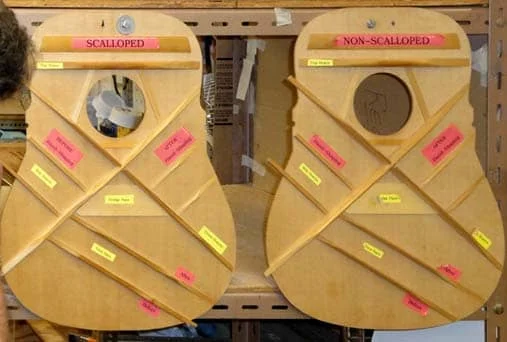
But this quality would ultimately be one of the determining characteristics in the evolution and development of the brand.
0, 00, and 000 Models
Single O Model was the first guitar designed with the intention of achieving greater projection of the instrument, as Martin had previously developed even smaller models known as Parlor guitars.

Although today, due to the evolution of the acoustic guitar, the model single O is also considered a Parlor, due to its very small sound box, compared to other current models.
But it turns out that this model was marketed in 1854, and then it was considered a superior instrument called by the brand as a “concert” guitar. In 1873 the double O (00) model would appear with a slightly larger body, named as the “grand concert”.
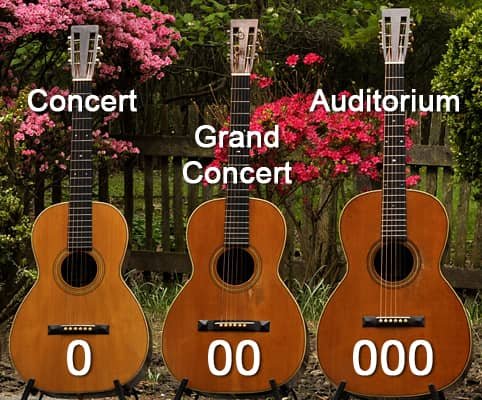
In 1902, the triple O (000) model was launched with an even larger sound box, known as the “auditorium” model. These guitars retain the original shape of the previous models, very similar to the body of a Spanish guitar.
But at that time the triple O was not well received, precisely because of its larger size, and the rise of the new and stylish banjo.
It would not be widely accepted until the 1920s, precisely with the appearance of metal guitar strings.
X-Bracing Was Key to the Success of Martin Guitars
Although some considered the X-bracing less appropriate for guitars with gut strings, it was the only one that could withstand the greater tension applied by metal strings on the guitar. Unlike the old animal gut strings, usually made of sheep or goat gut. Since in the 19th century and the first decades of the 20th century, metal or nylon strings did not yet exist.
Thanks to this characteristic quality, Martin focused on the production of steel-string acoustic guitars in 1921. The O models mentioned above would subsequently become an essential part of traditional American music such as the blues. Martin would successively make further improvements, which would eventually develop the acoustic guitar as we know it today.
Narrower Neck and Dovetail Joint
The manufacturer added a narrower neck to encourage use by banjo players. He also added the classic dovetail joint to his designs to connect the guitar neck to its soundboard. This improved the transmission of sound from the neck to the body of the guitar.
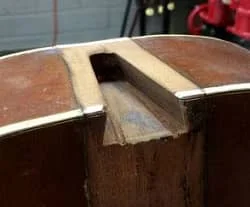
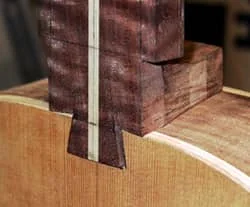
Later, the Martin catalogue was updated with new, larger models, due to the need to obtain a greater sound presence when guitarists played with other instruments. In the process, different styles of acoustic guitar with different sounds were born, and each model acquired its own personality.
OM Model
Martin therefore produced the OM or Orchestra Model in the early 1930s. In this model the manufacturer attached the soundboard to the 14th fret of the neck, to facilitate access to the lower part of the fingerboard.

Something that became so popular that Martin established the joint between neck and body at the 14th fret as standard on almost all of its models.
Martin Creates the Dreadnought Model
Finally, in 1931 Martin developed the body known as Dreadnought. Considered the standard shape and size of acoustic guitar, also referred to as D size.
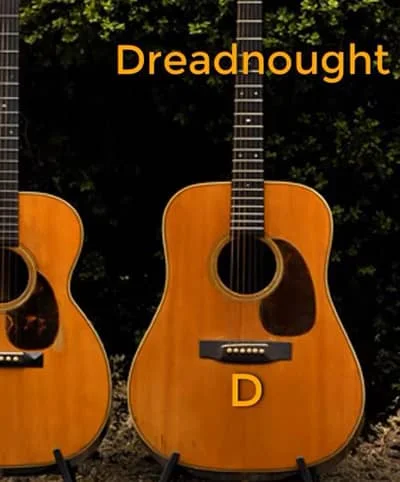
The most popular and best-selling model ever made, used as a reference by virtually all acoustic guitar manufacturers. A model that accounts for 80% of all Martin brand production.
As if all this were not enough, in 1981 Martin would devise a way to integrate a cut into the acoustic guitar’s body that would allow better access to the highest notes on the neck in the style of electric guitars, known as a cutaway.
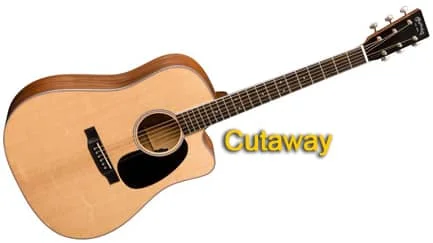
Solid or Slotted Headstock
Martin offers two headstock finishes: solid or slotted. There has been much discussion about the properties and differences between the two options. But when we get into these types of discussions, it is most likely that we are dealing with nuances that are so imperceptible that they give rise to all kinds of speculation.
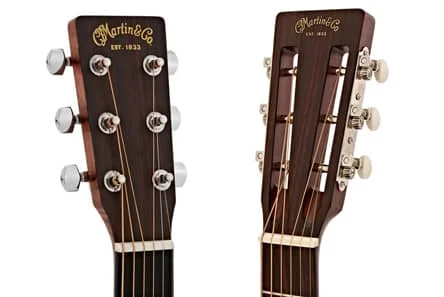
We could say that it would be a mainly aesthetic choice. Although change strings on a solid headstock is slightly more comfortable.
Martin Guitars Mexico
In 1989 Martin began producing guitars in Mexico to expand its market to a greater number of users. Maintaining its high-end production in the United States.
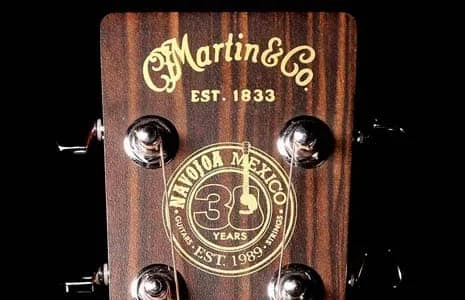
In the Made in Mexico series we find models at more affordable prices, such as those in the X series. With integrated amplification units, and in different finishes.
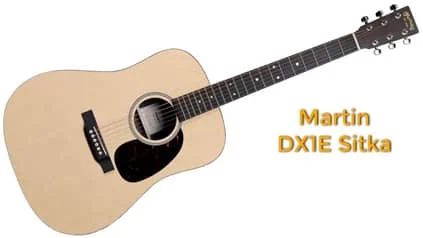
We can also get their most charismatic O models in this series.
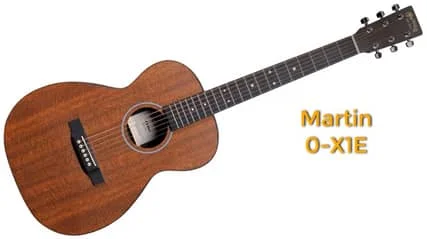
Martin Little
Although we can also get even smaller models with a shorter scale in the Little series. These guitars are mini in size, but with a big sound.
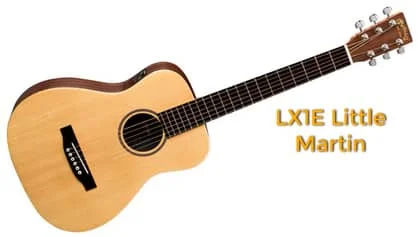
However, don’t expect the sound of a triple O in a guitar like this. Because each model has its own character and characteristic sound.
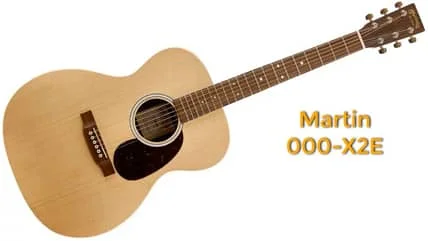
Martin Junior
In the Junior series we will find Dreadnought and Triple O models, with a slightly smaller body for those who find the standard models a too big.
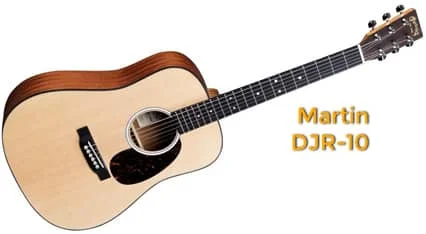
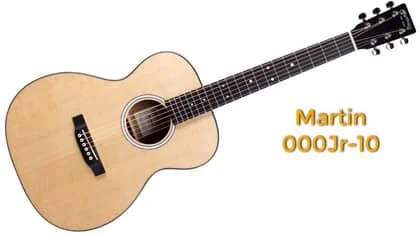
In short, excellent guitars bearing the name of a legendary brand, at a reasonable price. And in any case, Martin is always Martin.
The Martin brand has been ahead of other manufacturers in many ways. Other brands have incorporated their construction techniques and improvements developed by the legendary acoustic guitar manufacturer into their own catalogues, such as the 0 models and the ubiquitous dreadnought model.
